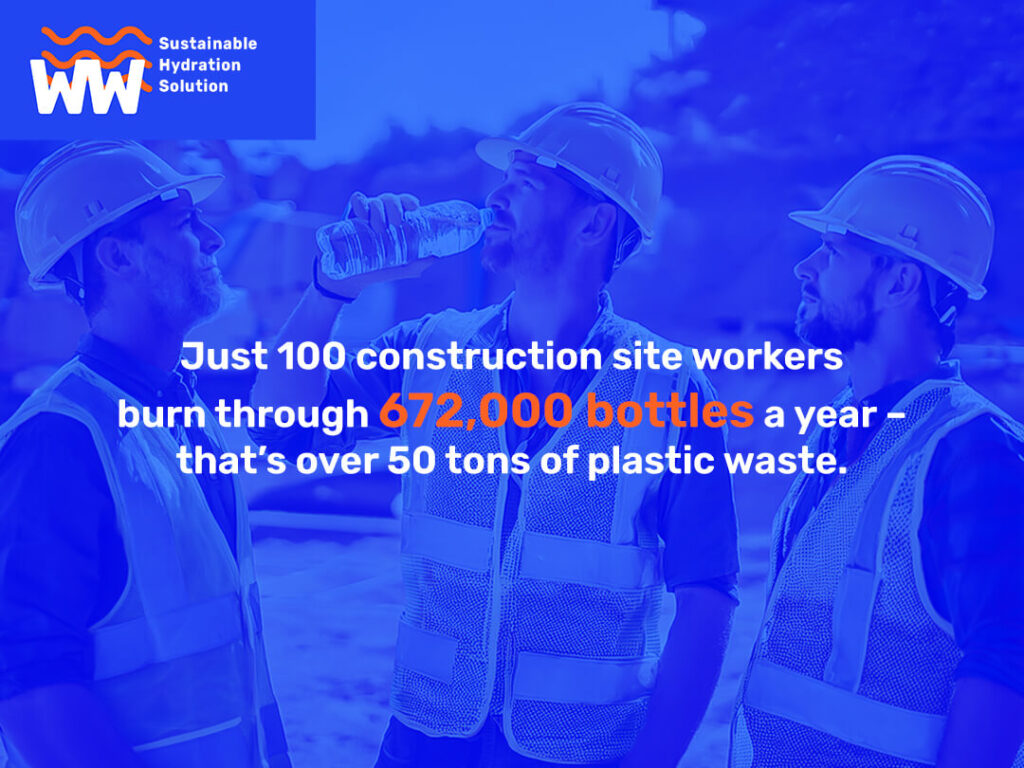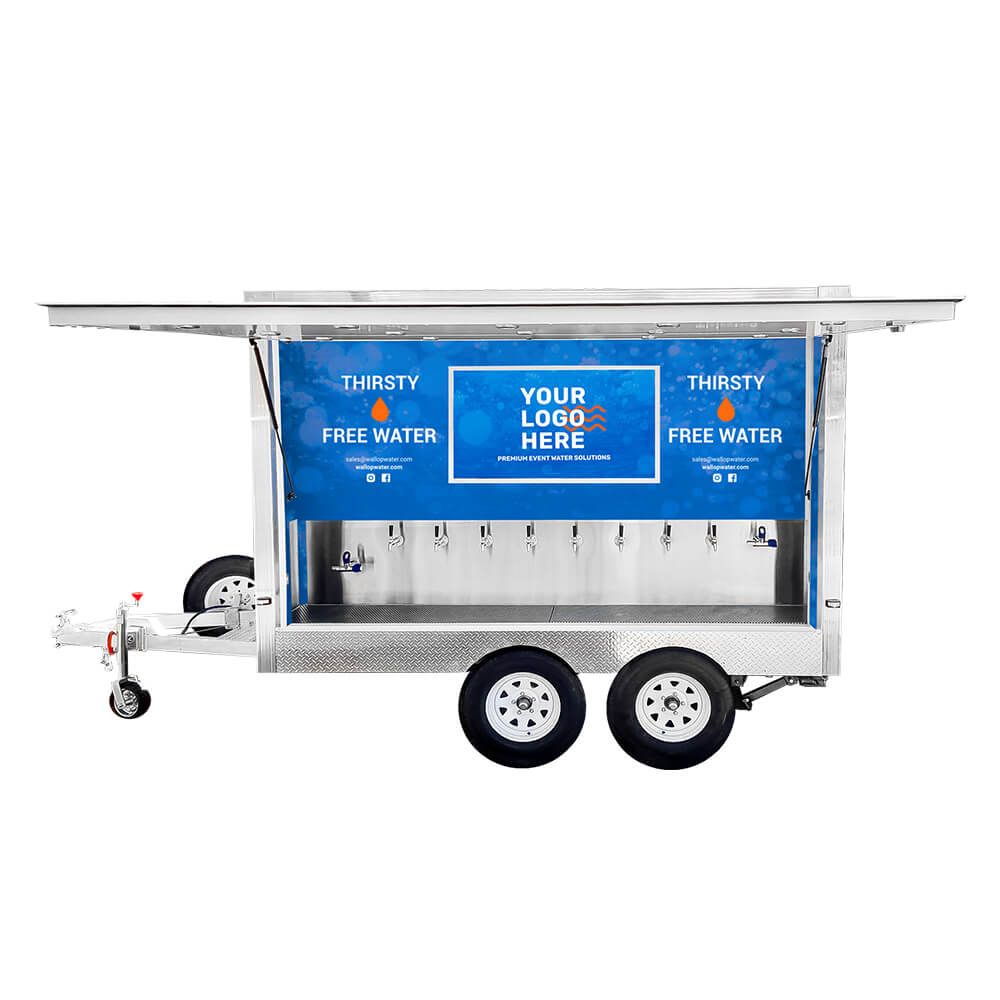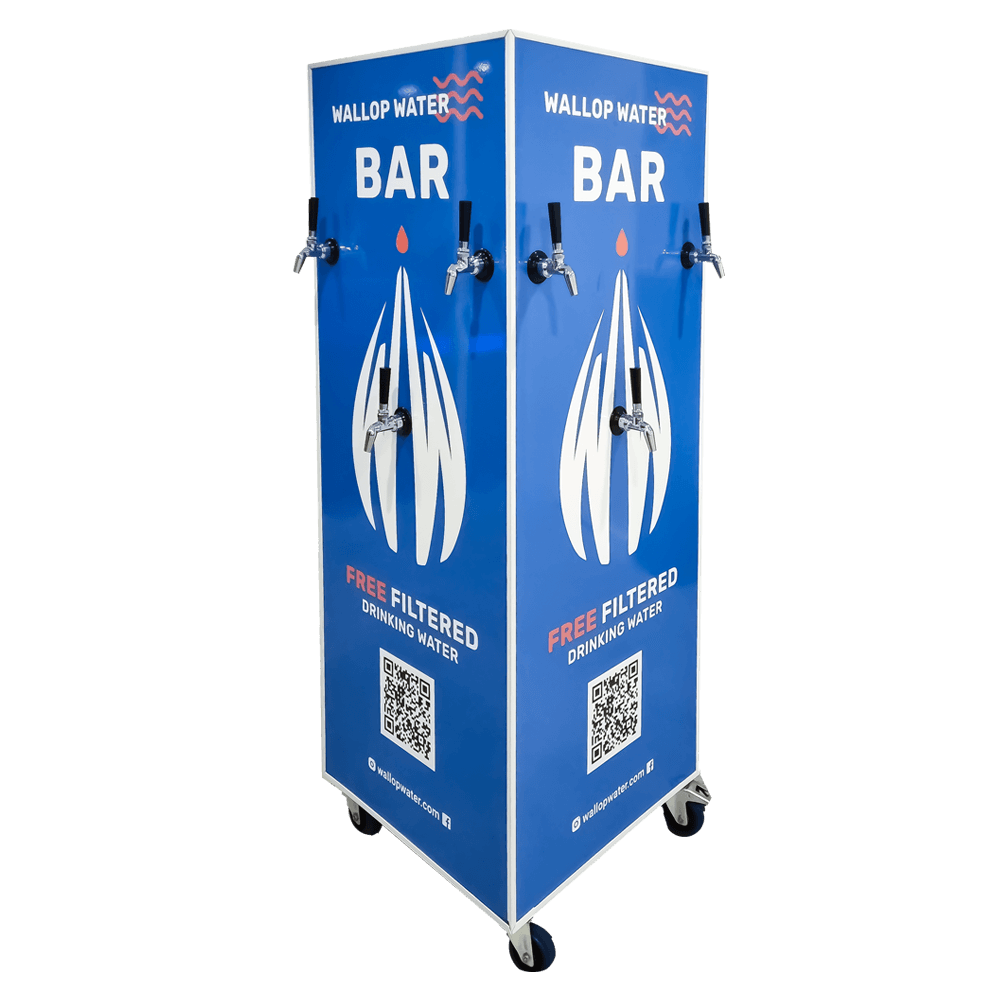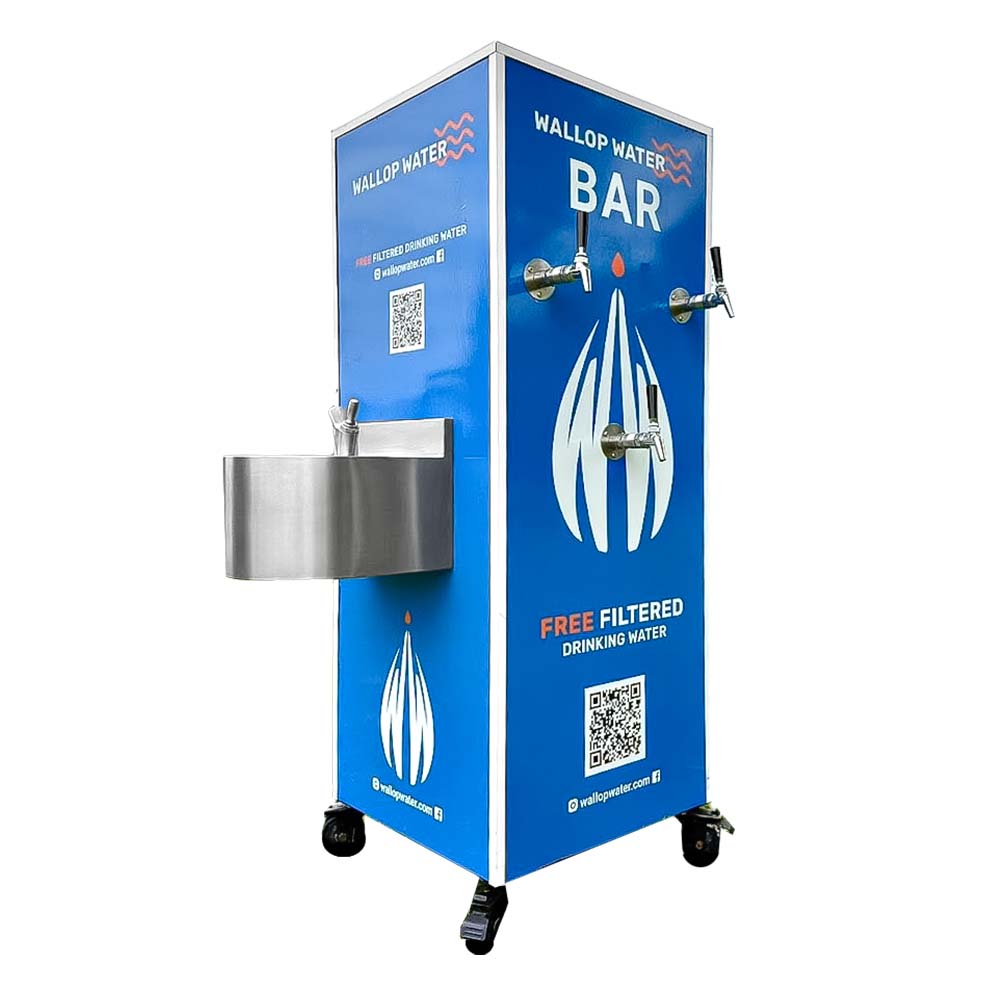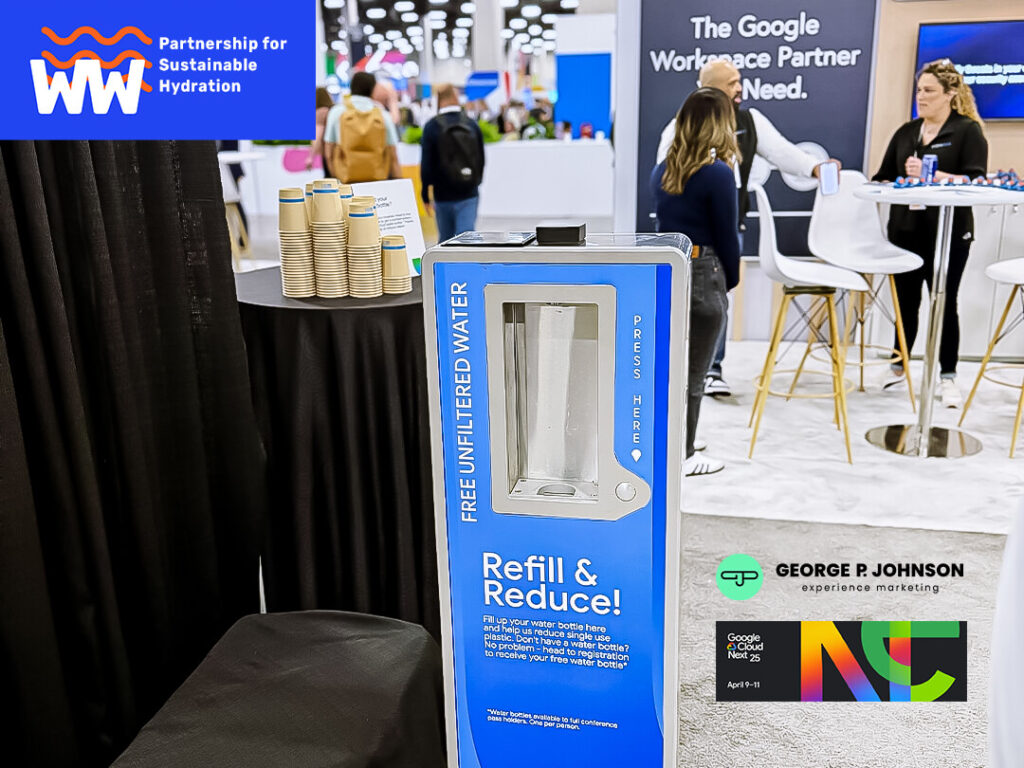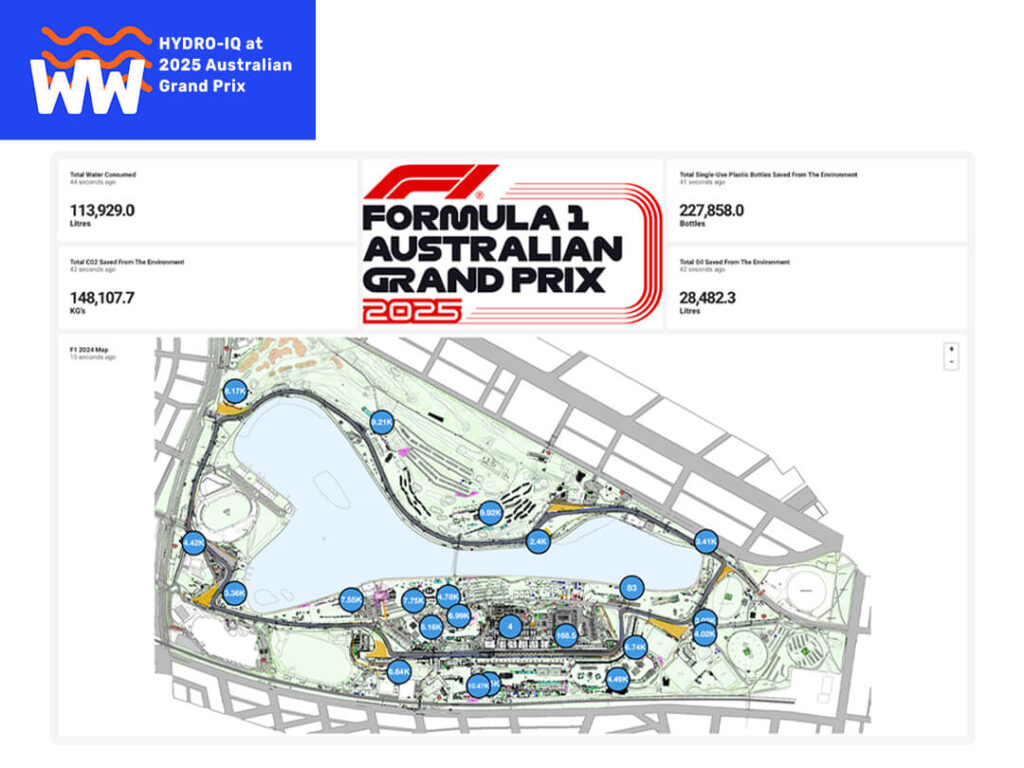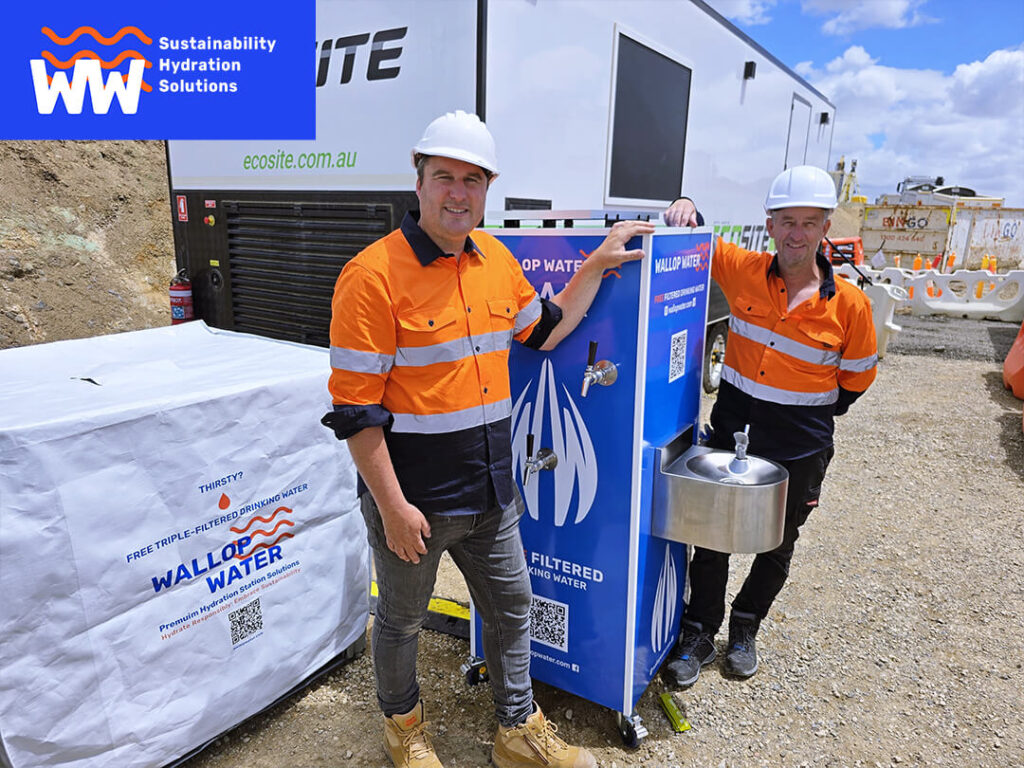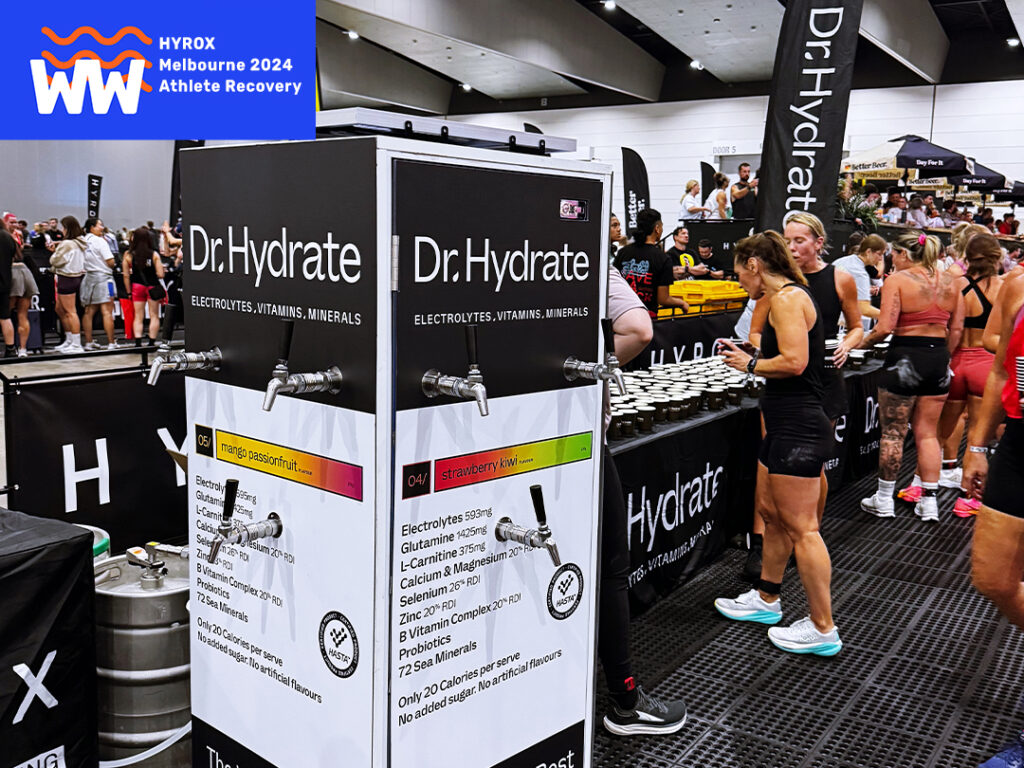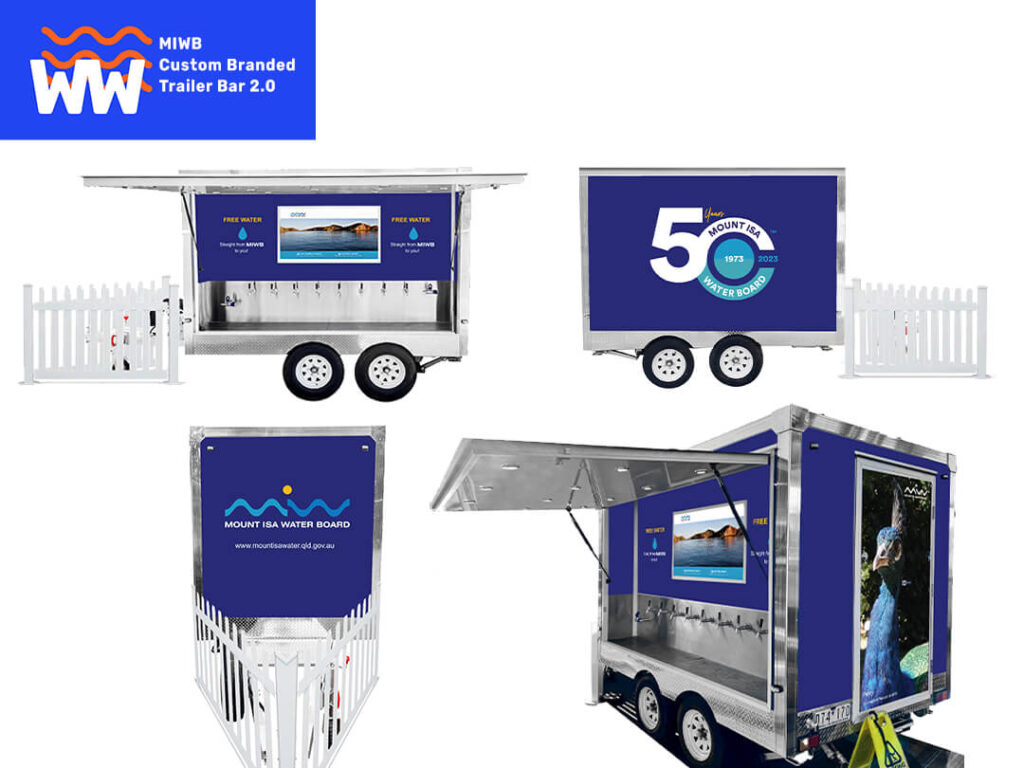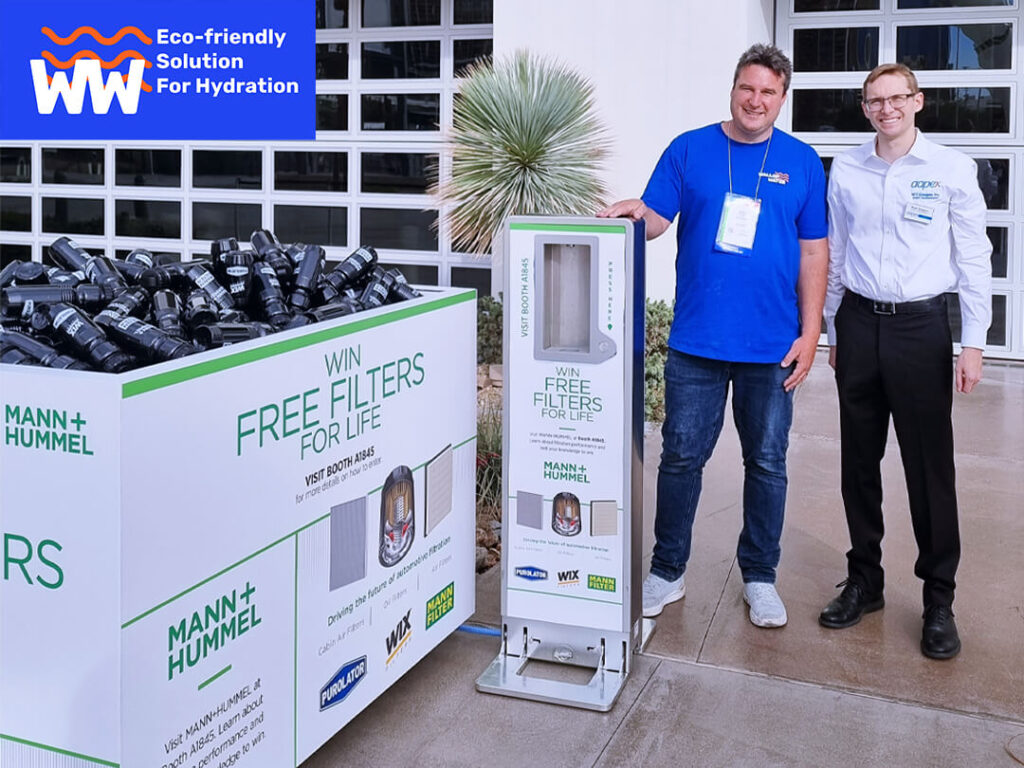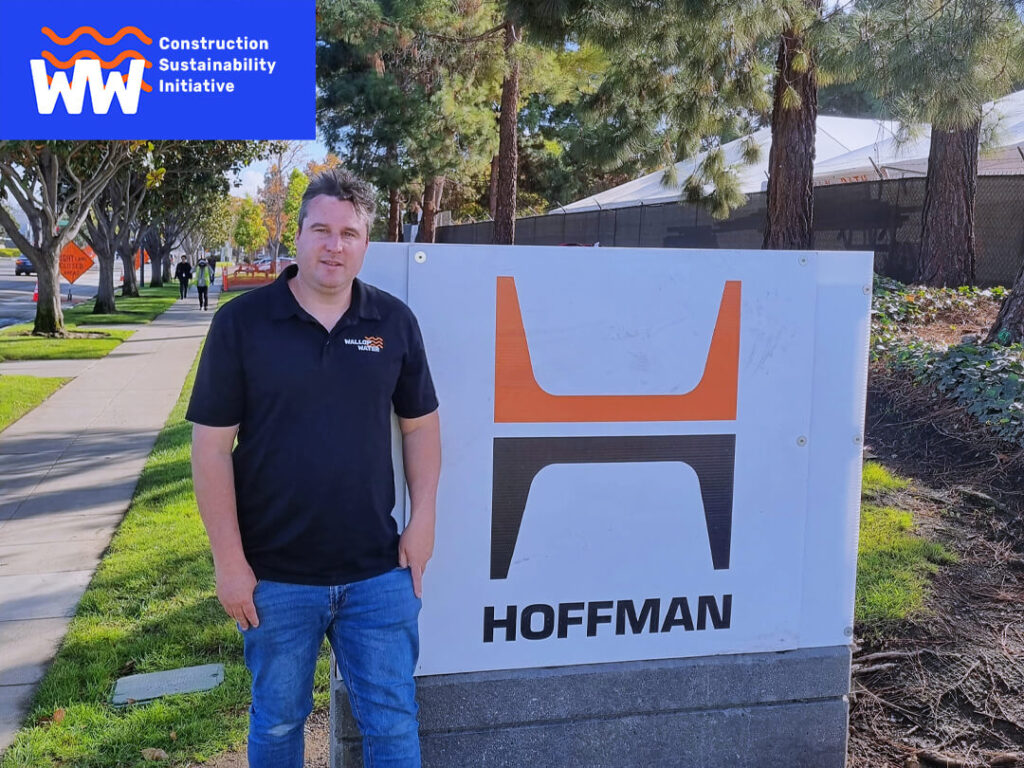As the globe accelerates toward a more sustainable future, construction sites are beginning to reflect this shift. Sustainability charters are no longer aspirational—they’re now a requirement.
At WALLOP WATER, we see the ripple effect firsthand, particularly as procurement teams begin re-evaluating how they provide hydration on remote job sites.
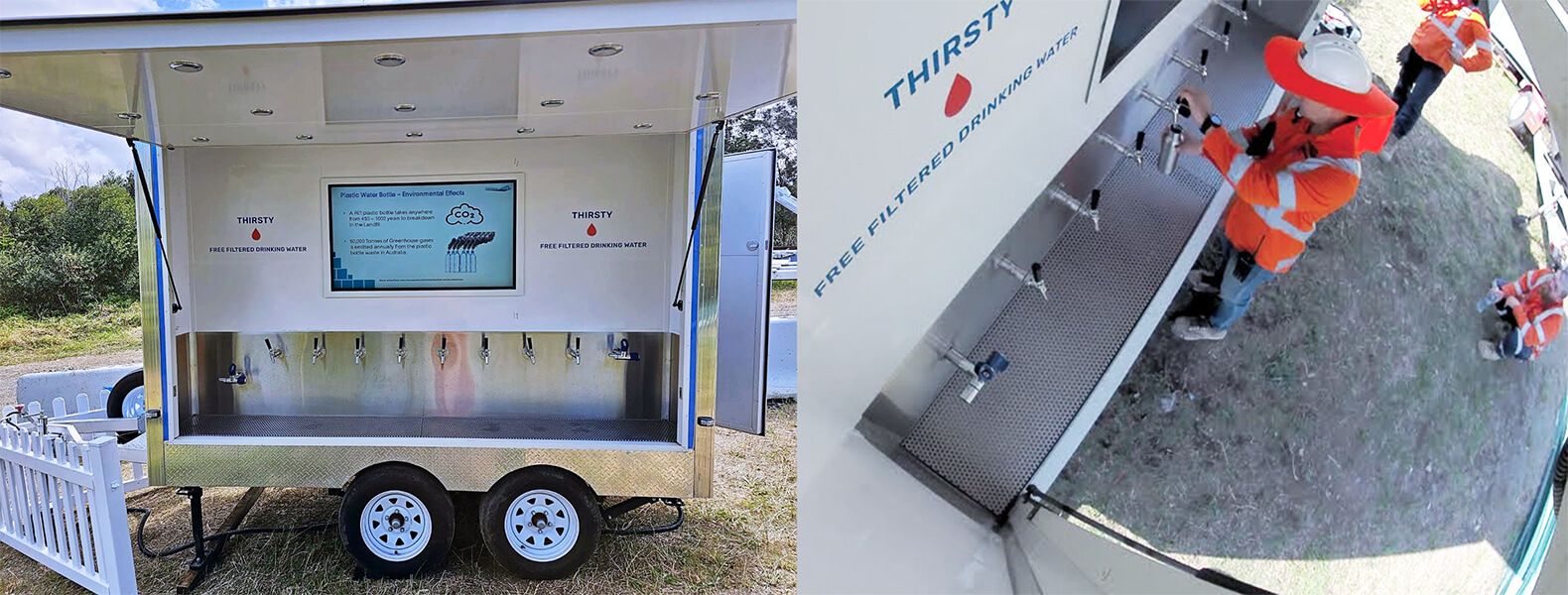
We’re regularly asked to bid on projects where water and power infrastructure don’t exist. That’s no challenge for us. Our Trailer Bar 2.0 and Monster Bars were engineered specifically for these conditions—fully remote, solar-powered hydration stations equipped with internal or external water tanks. They deliver fresh, chilled, filtered water without needing any external power or plumbing.
Yet, in many procurement assessments, we’re still being compared to the outdated model: single-use plastic water bottles.
Let’s break it down.
Bottled Water: Do the Math
At a typical construction site, each worker is expected to have 3–4 bottles of water available every hour to stay hydrated and safe.
Here’s the math for just one worker:
- 3.5 bottles/hour x 8 hours/day = 28 bottles/day
- 28 bottles x 5 days/week = 140 bottles/week
- 140 bottles x 48 work weeks/year = 6,720 bottles per worker per year
Now multiply that by:
- 10 workers = 67,200 bottles/year
- 100 workers = 672,000 bottles/year
- 1,000 workers = 6.72 million bottles/year
- 5,000 workers = 33.6 million bottles/year
Additionally, over 65% of bottles are only partially consumed before being discarded due to temperature, hygiene concerns, or misplacement.
Staggering, right?
But the real cost is not just in the purchase price of bottled water. It’s hidden in the logistics and waste.
What Are the Hidden Costs?
Let’s unpack what single-use bottled water costs you:
- Procurement: Repeated ordering and bulk purchase logistics
- Delivery: Transportation to often-remote, hard-to-reach sites
- Receiving & Storage: On-site handling, security, and space allocation
- Distribution: Manual labour to get bottles to the workers
- Waste Cleanup: Bottles left onsite, blown by wind, or buried under debris
- Waste Disposal: Bins overflowing, landfill contributions, site cleanup services
- Theft & Loss: Easily stolen or misplaced stock
- Low Usage Efficiency: On average, only 1/3 of each bottle is consumed before it gets warm, misplaced, or contaminated
In the end, you’re not just paying for water—you’re paying for the system that fails to deliver it efficiently or sustainably.
The WALLOP WATER Solution
Our Trailer Bar 2.0 and Monster Bars eliminate nearly every one of these hidden costs. They’re:
- Completely off-grid, powered by integrated solar battery packages
- Self-contained, with internal or external tanks holding high volumes of potable water
- Cost-effective, replacing thousands of bottles with reusable options
- Effortless to manage, with zero waste, no storage concerns, and no theft
- Designed for real work conditions, keeping workers hydrated with chilled, filtered water all day long
And just as important, they help you reduce your environmental footprint, meet sustainability benchmarks, and promote worker safety.
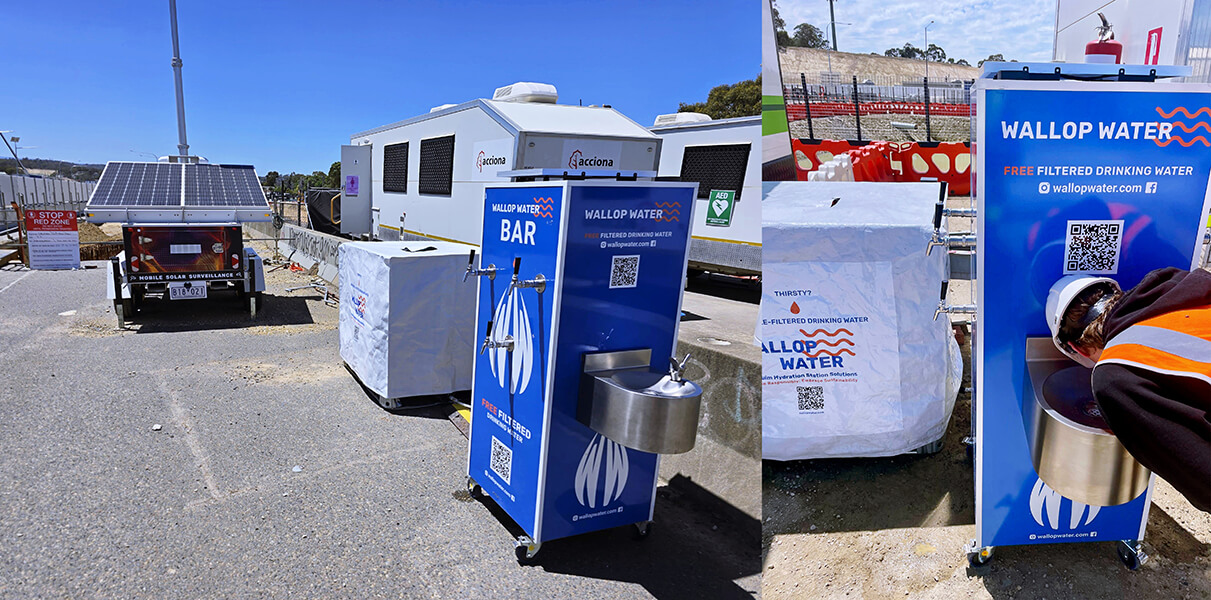
The Takeaway
The move toward sustainability isn’t optional. But continuing to rely on bottled water comes with a cascade of hidden costs that most procurement teams are only beginning to tally.
So the next time you’re planning hydration for your event or construction site, ask yourself:
What is the real cost of sticking with single-use bottles?
Ready to ditch bottled waste and save over 70% on hydration costs? Reach out to WALLOP WATER today. Let’s make your site sustainable—and smart.
The WALLOP WATER Solution:
WALLOP deployed 5 Trailer Bar 2.0 and 2 Monster Bars—fully solar-powered hydration stations with high-capacity internal and external tanks. These were rotated and replenished using our zero-emission service vehicles, providing:
- Chilled, filtered water
- Unlimited refill access for workers
- Zero plastic waste
- Off-grid independence
Cost Breakdown with WALLOP WATER:
| Cost Category | Bottled Water Model | WALLOP WATER Solution |
| Hydration Delivery | $840,000/year | $285,000/year (rental, service, logistics) |
| Logistics/Storage | ~$120,000/year | Included |
| Waste Disposal | ~$35,000/year | $0 |
| Theft/Loss | ~$20,000/year | $0 |
| Total Annual Cost | $1,015,000 | $285,000 |
| Annual Savings | – | $730,000 (72%) |
Outcome & Impact:
- Plastic waste reduced by 1.68 million bottles annually
- Annual savings of over $700,000
- Improved worker satisfaction with chilled, fresh water
- Zero-emissions hydration solution aligned with corporate ESG goals
WALLOP WATER helped us break our bottled water habit—and it’s saved us a fortune.” — Senior Project Manager, National Construction Client
Cost Comparison Table (Summary)
| Cost Comparison Table (Summary)
Item |
Bottled Water Model | WALLOP WATER Solution |
| Annual Plastic Bottles (250 workers) | 1.68M | 0 |
| Annual Water Cost | $840,000 | Included |
| Delivery & Storage | $120,000 | Included |
| Waste Disposal | $35,000 | $0 |
| Theft/Loss | $20,000 | $0 |
| Total Annual Cost | $1,015,000 | $285,000 |
| Plastic Waste | High | None |
| Sustainability Rating | Poor | Excellent |
**All pricing provided herein is for illustrative purposes only and does not constitute a binding offer. Final costs are subject to project-specific evaluation, location, service intervals, and terms of engagement.
